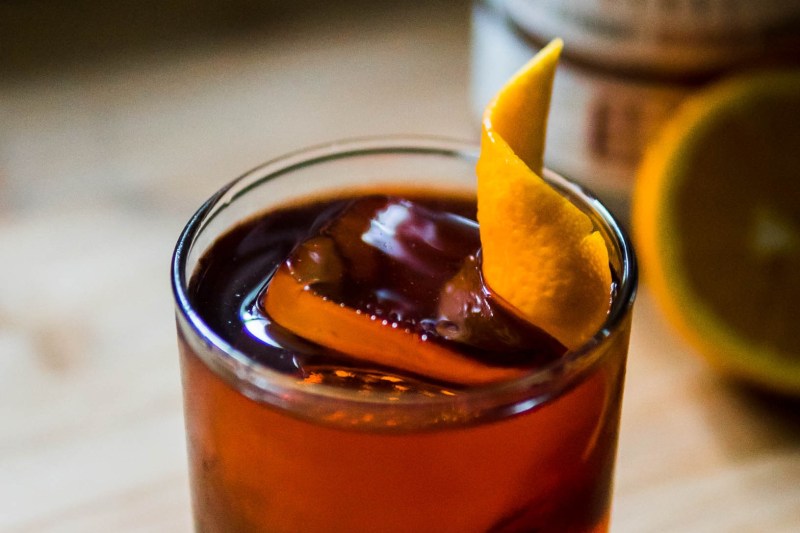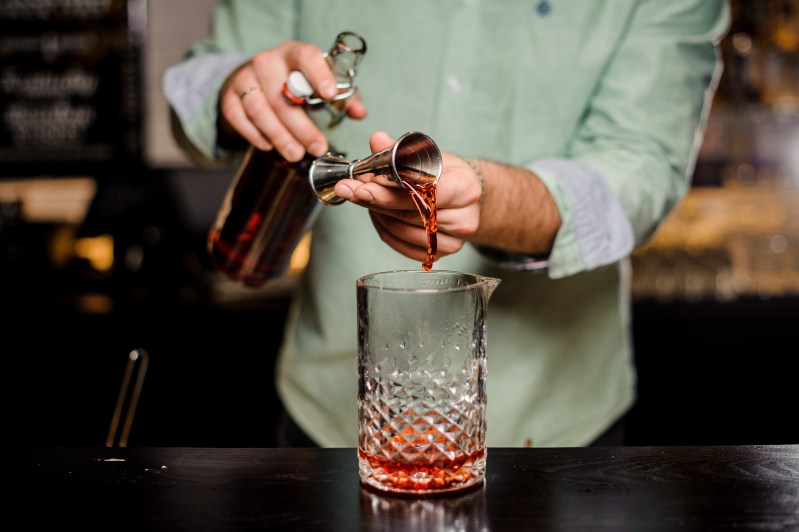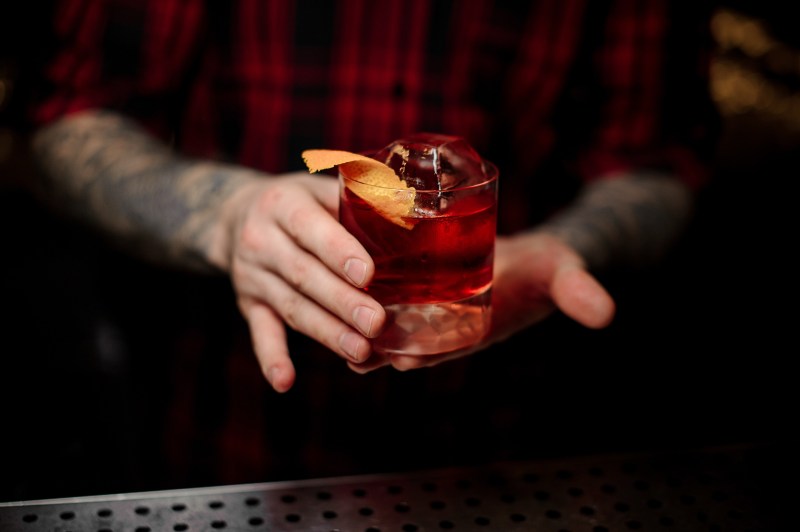If you’re a big fan of classic cocktails like the Negroni, one variation on this unique formula you must try is the Boulevardier. This version of the drink is nearly a century old and is still going strong, and it’s the whiskey lover’s reply to the gin of the Negroni.
The Boulevardier is a layered mix of Campari, vermouth, and bourbon, usually treated to a citrus garnish. It’s believed to have been created in 1927, when it became the favorite cocktail of expatriate writer Erskine Gwynne. The Paris-based penman worked on a magazine of the same name, hence the drink’s title. The drink was one of the many shining stars from the cocktail world’s first true golden era.
How to make a traditional Boulevardier

Ingredients
- 1 1/4 ounces bourbon (or rye whiskey if you prefer)
- 1 ounce Campari
- 1 ounce sweet vermouth
- Orange twist for garnish
Method
- Fill a mixing glass with ice.
- Add the bourbon (or rye if you are using that), Campari, and sweet vermouth and stir until the drink is well chilled.
- Strain into a rocks glass filled with fresh ice.
- Garnish with the orange twist.
Tips to make a great Boulevardier

Former Campari Brand Ambassador Daniel Warrilow knows the Boulevardier well. As is the case with most cocktails, it all begins with good, clean ice. “Clean out your freezer regularly and disinfect it to ensure that the ice is made to perfection,” he said. “Ice, much like water, will soak up flavors and aromas present in the freezer, which will then affect the drink as the ice melts into the liquid.”
From there, it comes down to taking care of your ingredients. Warrilow said to keep your vermouth in the fridge after it’s been opened, as it’s a wine-based concoction. He likes 1757, a true vermouth from Turin, Italy. “Selecting the right bourbon is important, especially one with a high rye content as that’s likely what the original Boulevardier was made with,” he said. What to select? He likes Russel’s Reserve 10-Year.
Another key aspect is the chill level. “I often batch my Boulevardiers in a glass decanter that I keep in my freezer,” Warrilow said. “The alcohol content will be high enough that it won’t freeze but it will remain perfectly chilled and ready to serve at any point in time. Just pull it out of the freezer and pour it over fresh ice.”
Naturally, you’ll need a garnish and in this case, it’s customary to go with orange. “I like a nice thick half-moon garnish so I have a snack when I’ve finished my drink, in true aperitivo fashion,” he said.
Alicia Perry’s ideal Boulevardier

Perry said that she likes this particular Boulevardier recipe, as it uses slightly less Campari and vermouth than what is featured in some of the more traditional Boulevardier recipes. “I find that it lends an improved mouthfeel, is less viscous, and allows the modifiers—Campari and sweet vermouth—to accompany the bourbon versus dominate it,” she said
Ingredients
- 1 1/2 ounces Buffalo Trace Bourbon or Eagle Rare
- 3/4 ounce Campari
- 3/4 ounce Carpano Antica sweet vermouth
- Orange twist for garnish
Method
- Stir in mixing glass with ice.
- Strain over ice.
- Garnish with an orange twist, following its expression into the drink.
The Alt-Boulevardier

Perry said she also loves a contemporary spin on the classic. She thinks it’s a versatile base recipe, with plenty of playing around that can be done with base spirits and infusions. “Campari actually takes quite nicely to infusions that contain higher fat content — think fat washing,” she said. Here, she offers a favorite recipe for a rum-based version of the Boulevardier.
Ingredients
- 1 1/2 ounces banana-infused Plantation 5-Year Rum*
- 3/4 ounce Campari
- 3/4 ounce Carpano Antica sweet vermouth
*Banana-infused rum: Perry infuses the rum with browned or overly ripe bananas. Add 3 bananas to one 750ml bottle of rum. Leave in a sealed container in a dry, cool, and dark space. Let the infusion go for 48 hours, then fine strain and use at your convenience.
Method
- Stir in mixing glass with ice.
- Strain over ice and garnish with an orange twist, following its expression.
What’s the difference between a Negroni and a Boulevardier?

The Boulevardier is very similar to another iconic equal-parts cocktail, the Negroni. Both the Negroni and the Boulevardier are made of three equal parts of spirit, sweet vermouth, and Campari. The difference is just in what the spirit is. For a Boulevardier, it’s bourbon (or sometimes rye). For the Negroni, it’s gin. That’s it!
This swap makes a big difference, though. The citrusy and juniper flavors of gin tend to make the Negroni a sharper cocktail, with more bitter heft to it, as it emphasizes the taste of the Campari, which is a real love-it-or-hate-it flavor. The Boulevardier, with its whiskey, tends to have a slightly spicier and less bitter character, making it rather more savory than sharp. But as Perry pointed out, this combination can feel a little flat to some, so the Boulevardier can benefit from a higher ratio of whiskey to the other ingredients, which gives the drink a firmer boozy backbone.
If you like both drinks, you can also experiment with swapping in other spirits — as Perry suggested, try a rum version or try different styles of whiskey to find which you like best. The great thing about classic cocktail recipes is how much experimentation they enable.



